Everything You Need To Know About EFuels

Is this what your motorcycle will be running on in the future?
The future of transportation and mobility is facing an interesting problem. Actually, a series of problems. For one, humankind is contributing to a climate crisis that needs to be corrected. For two, there are far too many internal combustion engines littered across the globe to simply scrap them all and start over with electrification. For three, as we’ve long known, eventually our supply of dead dinosaur juice is going to dry up and we won’t be able to produce fossil fuels anymore. And while that could solve problem number one (if the planet isn’t completely screwed by then), it just makes problem number two that much more serious. So, what do we do?
If you’re to believe what the automotive and motorcycle industries tell us, then battery-powered vehicles are the way of the future. This is not a debate about whether or not EVs will really solve our climate problems, but rather, we’re looking at EVs from a logistics standpoint alone. The global infrastructure needs a major boost to be even remotely close to meeting demand.
No matter where you stand on electric vehicles, or motorcycles in our case, the conversations tend to focus on what vehicles we’ll be operating in the future and how the motorcycle of tomorrow will be electric. One thing we don’t hear mentioned much is what to do about the existing ICE vehicles on the road today. The bikes of yesterday and today aren’t going anywhere any time soon, and as far as we can tell, every motorcycle manufacturer currently using internal combustion engines will continue to do so for the foreseeable future. Multiply this by the other sectors using internal combustion engines and you can see how ignoring the matter in favor of electrics is disingenuous. How do we keep all these vehicles running while helping to dramatically reduce emissions?
The answer could be synthetic fuels, or eFuels. Not to be confused with biofuels, which are derived from plants, eFuel is a carbon-neutral method of producing fuel, and it could represent the savior of the internal combustion engine. Or at least prolong its existence. Indeed, this is one of the goals of the ACEM, the European Association of Motorcycle Manufacturers, who have recently joined the eFuel alliance, a European commission focused on how to solve the climate crisis in motorized vehicles. Instead of focusing solely on one technology – batteries, mainly – to fix the planet, ACEM and the eFuel alliance believe the solution should be multi-pronged. Electric propulsion plays a part, but it’s just one branch on a tree whose branches also include hydrogen, eFuel, biofuel, and other technologies that may not even exist yet.
For the purposes of this story, however, we’re going to focus on eFuel (the terms eFuels and synthetic fuels will be used interchangeably here), as its applications and ramifications are very substantial.
What Is eFuel?
First things first. What is synthetic fuel in the first place? Simply put, eFuel involves splitting water into its two components, hydrogen and oxygen, through a process called electrolysis. Crucially, to keep the process carbon neutral, the power to perform electrolysis comes from renewable energy sources like solar and wind farms. Next, carbon dioxide (CO2) is captured directly from the atmosphere (instead of from the ground) and combined with hydrogen to produce synthesized methanol. This methanol is then refined into gasoline you can put in your fuel tank and ride, drive, sail, fly, etc.
Why It’s A Big Deal
On the surface, eFuels can be just the answer we’ve been looking for. Forget the motorcycles of the future, a near carbon-neutral fuel source that’s 85% cleaner than today’s fossil fuels means existing motorcycles (and cars, trucks, airplanes, ships, lawnmowers, farm equipment, etc.) can stay on the road. Yes, that’s great for markets like the US, where motorcycles are largely a luxury item, but when you think of the 1.3 billion vehicles across the globe, according to Porsche, the significance of eFuel grows by an order of magnitude.
On an economic scale, consider this: according to ACEM, the motorcycle industry brought in 21.4 billion Euros to Europe’s GDP. A world where liquid fuel is phased out would turn that number on its head. And let’s not even start with the rest of the global markets, especially Asia, where powered two-wheelers are a necessity. Factor in the jobs and economy saved and/or created because of eFuels, and its importance climbs yet again.
In fact, some well-recognized manufacturers are taking an active stake in the game. On the automotive side, McLaren has announced it will produce a development car to run on eFuel, stating only minimal changes will need to be made to accommodate it, which is one of the reasons why it’s so attractive. As far as putting money where their mouth is, Porsche has taken the lead here by investing $75 million in a Siemens eFuel plant in Chile, home to the world’s largest wind arrays, as part of its pilot program to produce 130,000 liters of eFuel per year, which it will initially use in its racing program before using it to power its road cars. All in the name of keeping the 911 alive. Especially old ones.
Considering the automotive industry takes the lead on curbing emissions, it’s no wonder why synthetic fuel is a hot topic over there. Motorcycles are a blip on the radar by comparison, but it’s only a matter of time before the political and regulatory conversation moves from four wheels to two. This is why the ACEM is trying to get in front of it, so motorcycle manufacturers (at least European ones) have a framework to start with and can help dictate the conversation when the time comes.
And it’s not like the motorcycle industry is moving blindly forward in a fossil fuel-driven world. Obviously electric motorcycles from companies like Zero, Energica, KTM, and others exist, but the development of eFuel for the motorcycle industry is quietly taking shape in the background. By 2024, MotoGP has mandated the use of fuels with at least 40% non-fossil origin, and by 2027 the series will require 100% of its fuel be carbon neutral. Those are big goals with not a lot of time to get there.
For their part, Ducati and KTM, both participants in the MotoGP championship, are taking a proactive approach to synthetic fuels and a more sustainable future. During a recent ACEM press event, Karl-Maria Grugl, Head of Homologation & Regulatory Affairs for KTM, pointed towards a multi-pathway KTM is taking that includes both electric propulsion and eFuel under the “right vehicle, right place, right energy carrier” paradigm.
KTM already produces electric motorcycles under the Freeride banner, and further electrification is where Grugl sees the company heading for performance categories under 250cc. Over the 250cc threshold, KTM is sticking with internal combustion engines for now, some or all of which to be powered by eFuels. Grugl hopes the adoption of eFuel catches on globally, especially in a huge market like the US, but he acknowledges adoption will be hard. “The US is fractured in terms of requirements,” he says. “California sets the scene for decarbonization, with similar ambitions to the EU, but California also has a non-technology neutral approach.” This is evidenced by the state’s recent law banning the sale of new gas cars and trucks by 2035 in favor of battery power. Grugl fears dumping all the eggs in the battery-powered basket is going to hamper global efforts to reduce emissions with multiple strategies in parallel.
For Ducati, CEO Claudio Domenicali is also adopting the multi-prong approach, but for slightly different reasons. In Domenicali’s view, Ducati is a luxury brand, not a mobility brand. The company won’t stay afloat atop the sales of millions of scooters like, say, Honda will. It stakes its claim as offering its customers with a premium experience by offering the best motorcycle in a category. With all the uncertainty surrounding what will power vehicles of the future, Ducati wants to be ready, no matter the outcome.
This is one of the reasons why it agreed to be the sole motorcycle manufacturer for the MotoE series, with a four-year contract starting in 2023. There’s still no crucible like racing, and this trial-by-fire approach to building the best electric motorcycle will eventually trickle down to consumer models in the future.
The same holds true for the adoption of synthetic fuels. The MotoGP mandates have forced the hands of all the manufacturers in the series, but Domenicali sees the adoption of eFuels as an interesting challenge for Ducati, both in terms of performance but also for mass production, as, in theory, the existing fuel infrastructure can be used immediately. Like Porsche to some degree, Ducati is especially keen to see eFuels become more prominent so the Ducatisti can keep riding their bikes.
For such a small company like Ducati to be spending in eFuel R&D, it certainly brings with it some risks, but interestingly, says Domenicali, this spending is necessary “because there is a lot of uncertainty in the world,” especially in regards to propulsion technology of the future. He continues, “The risk of losing money in development is not as bad as losing money when we’re not ready for the future.”
The Challenges
If synthetic fuel is the answer to all our problems, then why aren’t we hearing more about it? Actually, the debate has been raging on the automotive side for a few years now, but as mentioned earlier the motorcycle sector is much smaller and thus less important. Nonetheless, the adoption of synthetic fuels, especially for a motorcycle, is a little tricky, and the reasons can be broken down into three main points: Efficiency, Cost, and Availability. These reasons also lead to two more points that are interrelated: Manufacturer buy-in and Political uncertainty.
Efficiency
For as much as electric motorcycles (and EVs overall) get a bad rap for being boring, soulless modes of transportation (something we disagree with, BTW), EVs are very efficient in terms of energy production making it to the rear wheel of your motorcycle. Various studies have shown that an electric vehicle can be anywhere from 40% – 70% efficient, meaning that starting from the energy production process, as much as 70% of the energy remains once it arrives at the rear wheel.
Synthetic fuel, by comparison, is dismal. When you factor in the electrolysis process, carbon dioxide capture, the synthesis and refining process, and the inherent inefficiencies of the internal combustion engine, the above studies show only 18% of the energy is making it to the rear wheel – at best. At worst, that number drops into the single digits. This is the reason Mercedes, unlike some of its rival car makers, hasn’t bought into eFuels. However, in terms of well-to-wheel efficiency, traditional gasoline is only about 13% efficient. Neither number is particularly great, mind you, but if we’re going to be inefficient, we might as well do it with carbon-neutral fuels.
To put it another way, current estimates show that you’ll need at least four times as much electricity generation between eFuel and batteries to power the current fleet of vehicles.
Cost
This leads to just how much it costs to make synthetic fuel. According to this study, by 2030 eFuel would cost around 3 Euros a liter – or over $13 per US gallon. Europeans are used to petrol prices costing close to this much, but American audiences would absolutely lose their mind at fuel prices this high (though it might convince even more to ditch their cars for motorcycles…).
A partial way to offset and/or reduce this cost is to take advantage of areas in the world where sunshine and wind are abundant, so the cost of producing electricity is virtually nil. This is why regions of Chile, Germany, and offshore wind farms are being exploited for their wind, while sun belts throughout the world are being used to harvest solar energy. But the fact remains that there aren’t nearly enough wind or solar farms in existence today, and ramping up those numbers will be incredibly expensive and difficult.
Availability
The cost problem goes hand in hand with eFuel’s lack of availability at present. Not surprisingly with a technology in its infancy, there aren’t many refineries currently producing synthetic fuel. At least not on a large scale. Earlier we mentioned Porsche investing in a Siemens plant in Chile. It’s forecasted to produce 500,000,000 – half a billion – liters of eFuel by 2026. This is great, except the US alone consumed 467 billion liters of fuel in 2020. This amounts to the Chile plant supplying less than 0.1% of US consumption. If true, that’s actually a decent amount for a single plant. Scalability will be key.
At current, the eFuel alliance predicts synthetic fuels could gradually be mixed with traditional fuels at increasing rates until synthetics make up 100% of the fuel coming out of the pumps. The problem is that 100% takeover won’t happen until 2050.
Manufacturer and Political Buy-In
Making emerging technology more widespread isn’t new. You only need to look at the personal electronics sector for evidence. But when it comes to emerging tech with global climate impact, the hurdles for mass adoption are much bigger. Much like battery tech and EVs have seen a recent boom because of manufacturers, governments, and regulatory bodies around the world aligning themselves with the tech and dedicating funding towards it, the problems synthetic fuel faces could at least be partially alleviated with similar buy-in.
The fact remains that the internal combustion engine isn’t going anywhere. Not in the immediate future, nor in the intermediate future. And there’s also the point made in the beginning – there are already millions of ICE motorcycles circling around the world today. What do we do with those? Very little attention has been given to helping curb our climate crisis with existing vehicles in tandem with future vehicles.
Conclusion
On paper, eFuel looks very promising. Instead of putting all our eggs into battery power to propel us into the future, it makes sense to take a multi-pronged approach with various alternative energy sources. Synthetic fuels are just one avenue, with the huge added bonus of being able to power vehicles already on the road, using infrastructure that already exists. No perfect solution exists yet, and it still has several major hurdles to overcome. For the many motorcyclists who refuse to give up on the internal combustion engine, there’s hope.
Become a Motorcycle.com insider. Get the latest motorcycle news first by subscribing to our newsletter here.

Troy's been riding motorcycles and writing about them since 2006, getting his start at Rider Magazine. From there, he moved to Sport Rider Magazine before finally landing at Motorcycle.com in 2011. A lifelong gearhead who didn't fully immerse himself in motorcycles until his teenage years, Troy's interests have always been in technology, performance, and going fast. Naturally, racing was the perfect avenue to combine all three. Troy has been racing nearly as long as he's been riding and has competed at the AMA national level. He's also won multiple club races throughout the country, culminating in a Utah Sport Bike Association championship in 2011. He has been invited as a guest instructor for the Yamaha Champions Riding School, and when he's not out riding, he's either wrenching on bikes or watching MotoGP.
More by Troy Siahaan



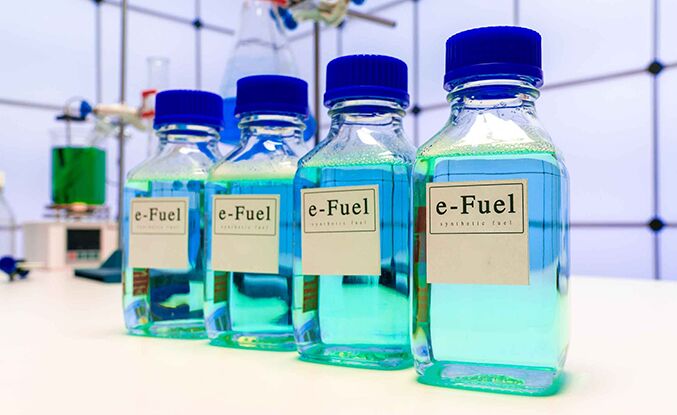
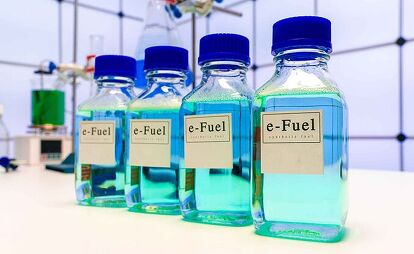















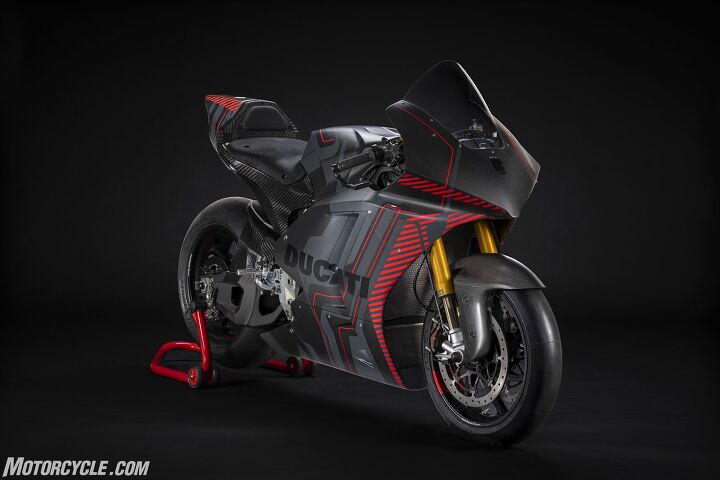






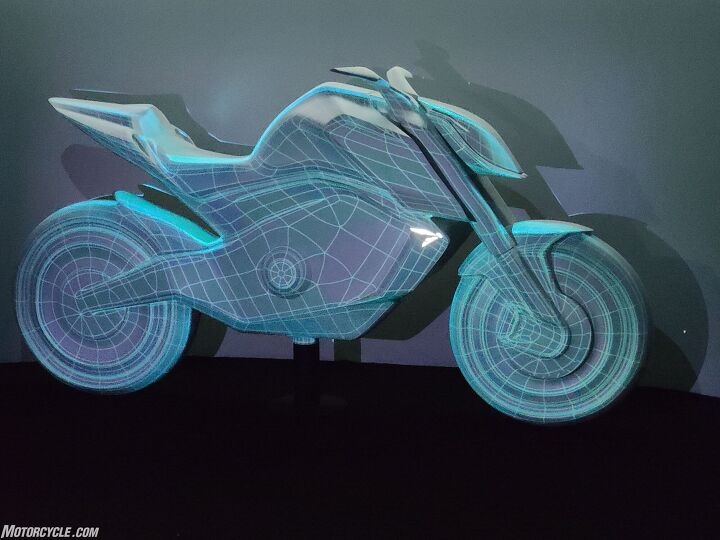









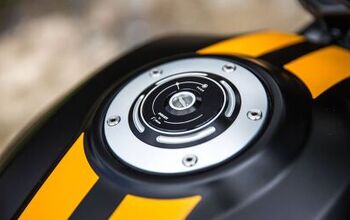














Comments
Join the conversation
To drastically reduce world population is the obvious answer to anthropogenic climate change. A population reduction strategy requires no new technology, costs close to nothing, and doesn't adversely affect the environment (no mining or drilling required). Less humans, less pollution. It's time to cull the herd. In the U.S. we should not have Medicare for people over 80 years old. Come on, let's save this planet!
If you’re going to spend all that energy performing electrolysis, why not just stop at the hydrogen? ICE engines can burn it. Then you don’t need to make methane or introduce carbon into the process at all.
Making synthetic fuel looks like a boondoggle.